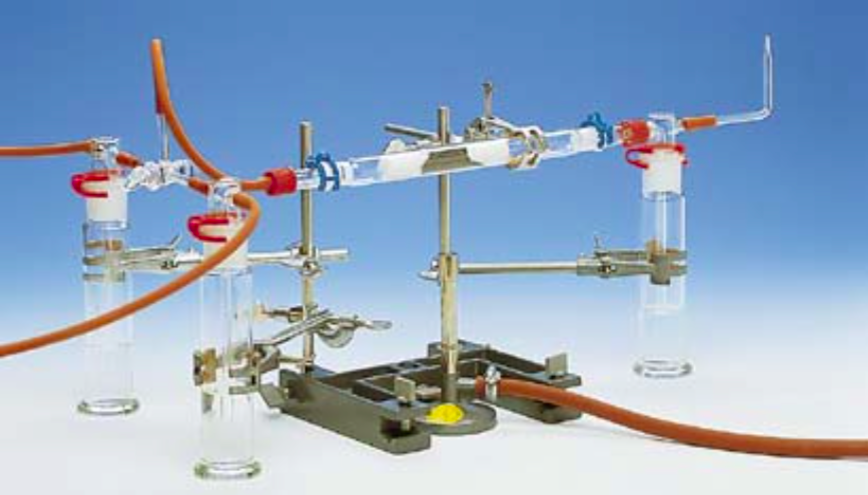Item no.: P3110200
Principle
The Haber-Bosch process was the first large-scale technical method for producing nitrogen compounds based on the nitrogen in the air. The formation of ammonia benefits from a falling temperature and rising pressure since it is an exothermic reaction that is accompanied by a decrease in volume. At room temperature, however, the reaction rate would be so small that it could not be measured. In addition, current catalysts are only effective at higher temperatures (approximately 400-500 °C). If these temperatures are used at normal pressure, the ammonia yield is approximately 0.1% by volume. Technical processes, in which the pressure is increased in a continuous process, yield approximately 11% (establishment of equilibrium at 200 bar: 17.6% of ammonia).
The setup that is used here can be used to demonstrate the Haber-Bosch process in a simplified manner. The optimum conditions that are necessary for the process cannot be realised with the means that are available at schools or it would be extremely difficult to realise them.
Tasks
Demonstrate the principle of the Haber-Bosch process.
What you can learn about
Ammonia preparation from the elements (Haber-Bosch process)

